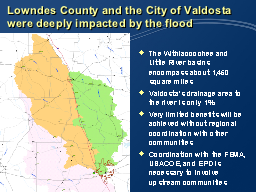Cost already sunk Kewaunee, Calvert Cliffs, Crystal River, and are gnawing away at San Onofre: now it looks like new owner Duke is not likely to build Progress Energy's Levy County, Florida reactor. All that plus even in Georgia, even against all-powerful Georgia Power, there's a reaction against the cost of the always-later always-more-expensive new nukes at Plant Vogtle on the Savannah River. A reaction that's getting written up in the Valdosta Daily Times.
In the VDT today from AP, Some leaders souring on nuclear power costs. I'm quoting from the abcNews version because it includes the author's name, Ray Henry, and the original date, 3 March 2013. I added all the links and images.
As the cost of building a new nuclear plant soars, there are signs of buyer's remorse.
The second-guessing from officials in Georgia and Florida is a sign that maybe the nation is not quite ready for a nuclear renaissance. On top of construction costs running much higher than expected, the price of natural gas has plummeted, making it tough for nuclear plants to compete in the energy market.
In Georgia last week, Southern Co. told regulators it needed to raise its construction budget for Plant Vogtle in eastern Georgia by $737 million to $6.85 billion. At about the same time, a Georgia lawmaker sought to penalize the company for going over budget, announcing a proposal to cut into Southern Co.'s profits by trimming some of the money its subsidiary Georgia Power makes.
And Southern Company and Georgia Power slipped the Plant Vogtle schedule still more, from 15 to 19 months late.
The legislation has a coalition of tea party, conservative and consumer advocacy groups behind it, but faces a tough sale in the Republican-controlled General Assembly. GOP Rep. Jeff Chapman found just a single co-sponsor, Democratic Rep. Karla Drenner.
 That's
HB 267: Financing costs; construction of nuclear generating plant.
And AP failed to mention
Georgia Sierra Club's support for HB 267.
That's
HB 267: Financing costs; construction of nuclear generating plant.
And AP failed to mention
Georgia Sierra Club's support for HB 267.
As a regulated monopoly, Georgia Power currently earns about 11 percent in profits when it invests its own money into power projects. Chapman's legislation would reduce those profits if the nuclear project is over budget, as is the current projection.
In Florida, there's a move to completely eliminate Construction Work in Progress (CWIP) such as is being used in Georgia to pre-fund the new Plant Vogtle nukes.
In Florida, lawmakers want to end the practice of utilities collecting fees from customers before any electricity is produced.
Florida only recently got CWIP, but Progress Energy has been quick to profit by it:
Continue reading
















